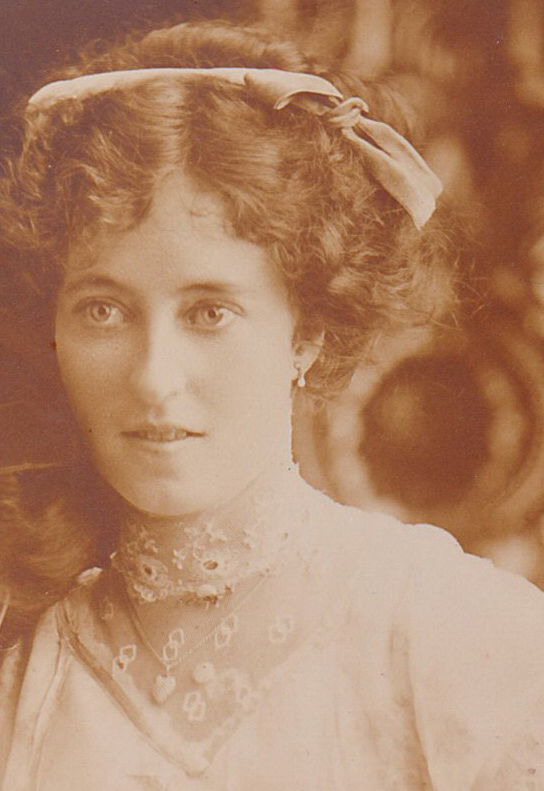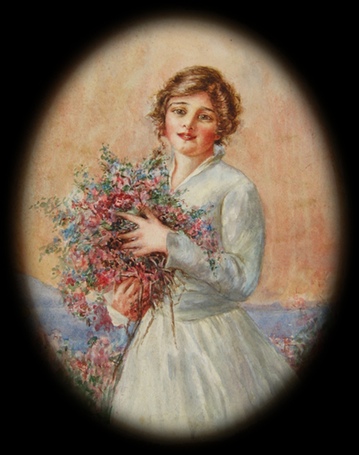Juanita, beautiful Juanita, known to her family as just ‘Nita’, was born in 1888, officially Katie Juanita Eastwood, my grandfather's younger sister. Talented at painting and other feminine accomplishments, around the turn of the 19th century she featured in the Kalgoorlie newspapers, attending garden parties, charity balls and school plays in fine dresses of ‘pale blue lace bertha and pink roses’ and ‘creme, with an over-dress of gold net’. Her talent for painting was already evident in 1905 when she won a prize at the Boulder Art and Industrial Exhibition for a watercolour of birds.
Her father was a modestly successful businessman in boom-town Kalgoorlie, where gold fever had just begun to take hold, and she had a polite middle-class childhood in boiling hot and dusty ‘Kal’. Imagine her floating in flowery silks and satins on the dance floor with other beautifully dressed and well-bred girls and boys on a typical summer’s day of 40 degrees.
How does Juanita escape the cocoon of this conventional childhood to emerge as a free-wheeling butterfly? It might have been her love of art. Perhaps, even there in the quiet streets of Kal, the modernising spirit of the 1920s found her, made her shed her satins and silks and drop her waistlines, propelled her towards a different life.
Perhaps already pregnant with her son Norman, although probably too soon for her to have known, did she rush into marriage in 1923 at the ‘old’ age of 35 to Stanley Illingworth, a banker in Perth, for fear? For love? For having left it too late? A marriage that was soon to become troubled, coming to an ugly and public head in 1929.
By 1925 Stanley had felt compelled to place a blunt notice in the West Australian newspaper that he would not be responsible for any debts contracted by his wife. After just six years of marriage, in September 1929, Stanley petitioned for divorce, after an earlier separation, on the grounds of desertion. The Advocate in Tasmania and the Evening News in Sydney give clues as to what went wrong:
‘My husband had mid-Victorian ideas,’ Katie Juanita Illingworth told Mr Justice Maxwell in the Sydney Divorce Court. The charges made against his wife by Stanley Illingworth, of Bowral, included: That she had painted a picture of another woman, ‘almost in the nude,’ and that that woman was smoking a cigarette. That she had displayed her undergarments on a clothes-line at Woy Woy. Mrs. Illingworth said that the ‘almost in the nude’ woman was a picture of ‘The Modern Woman,’ which she was copying for her brother. Her husband had no occasion to object to any display on the clothes-line.
We have to hope that Woy Woy, then a small town in New South Wales, recovered quickly from the terrible shock.
Stanley suffered her supposed flirtation with a tradesman, her making eyes at a policeman and her toying with men on a train, sprawling her legs in such an unladylike fashion as to knock against their ankles. But worst was her artistic audacity for painting the draped figure of the 'modern woman' adorned by a green turban and revealing her uncovered legs. The painting remained unfinished and was soon destroyed.

The star of the court case turned out to be the judge himself, saying wryly as he handed down his decision – 'Well, I have heard of Woy Woy having various attractions, but ...' He dismissing the petition and awarded costs against Stanley, 'satisfied that [his] conduct had been such as to render a common house impossible, commenting that he thought Illingworth was greatly to be pitied'.
In a move that no doubt annoyed Stanley, by early 1930 thoroughly modern Juanita was running a business, ‘Illingworth and Co.’, in Merredin, back in Western Australia. Did she experience brief success and prosperity before she died in October 1930, at the age of 42, from tuberculosis? It seems unlikely; poverty is so often the helpmate of tuberculosis.
I sometimes take down from the cupboard her girlish self-portrait, probably painted around 1910 when she was in her early twenties, a gentle watercolour with a heavy gilt frame. I clean the dust from the glass to look at this woman who I am supposed to resemble, only she looks fresher and purer, like someone born in an innocent age, someone who sees in the future a life in which women can paint and sing and dance and hang out their underwear to dry with abandon, and has not yet realised otherwise.
